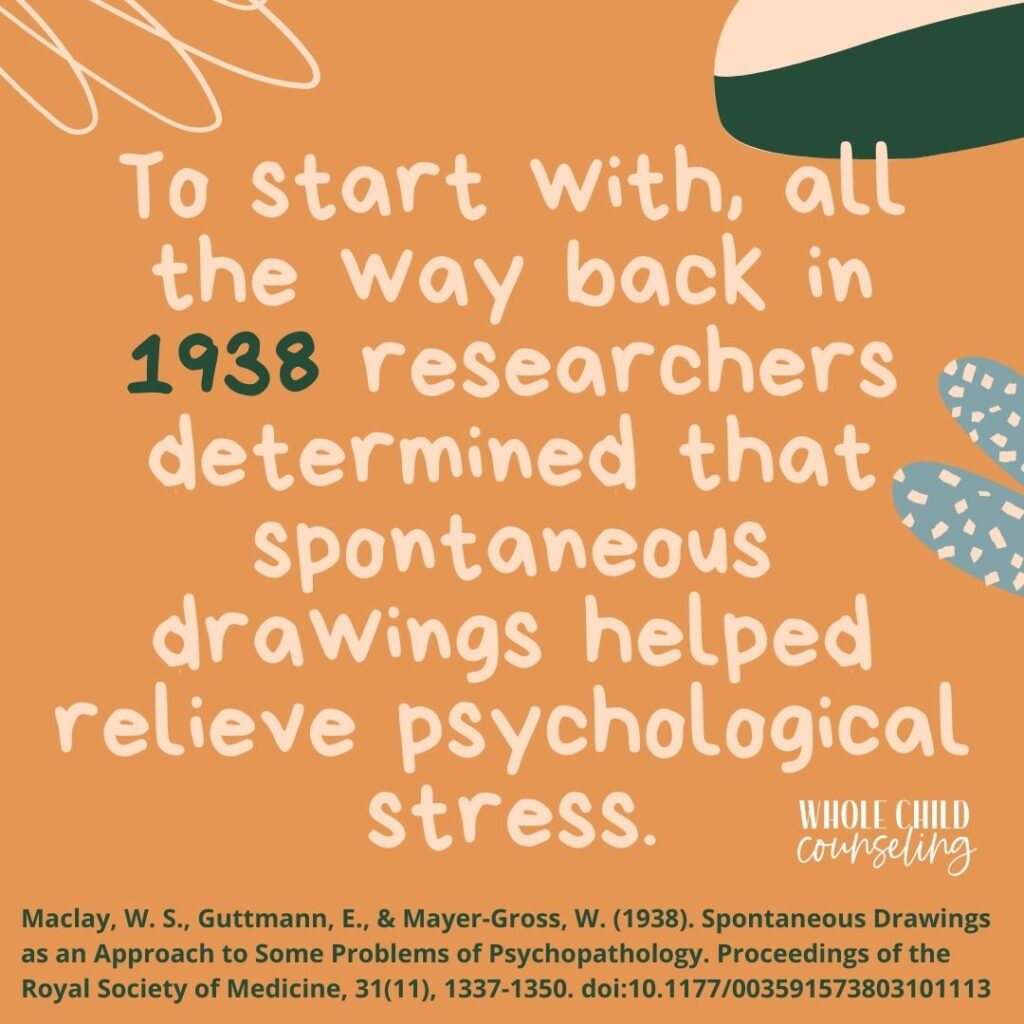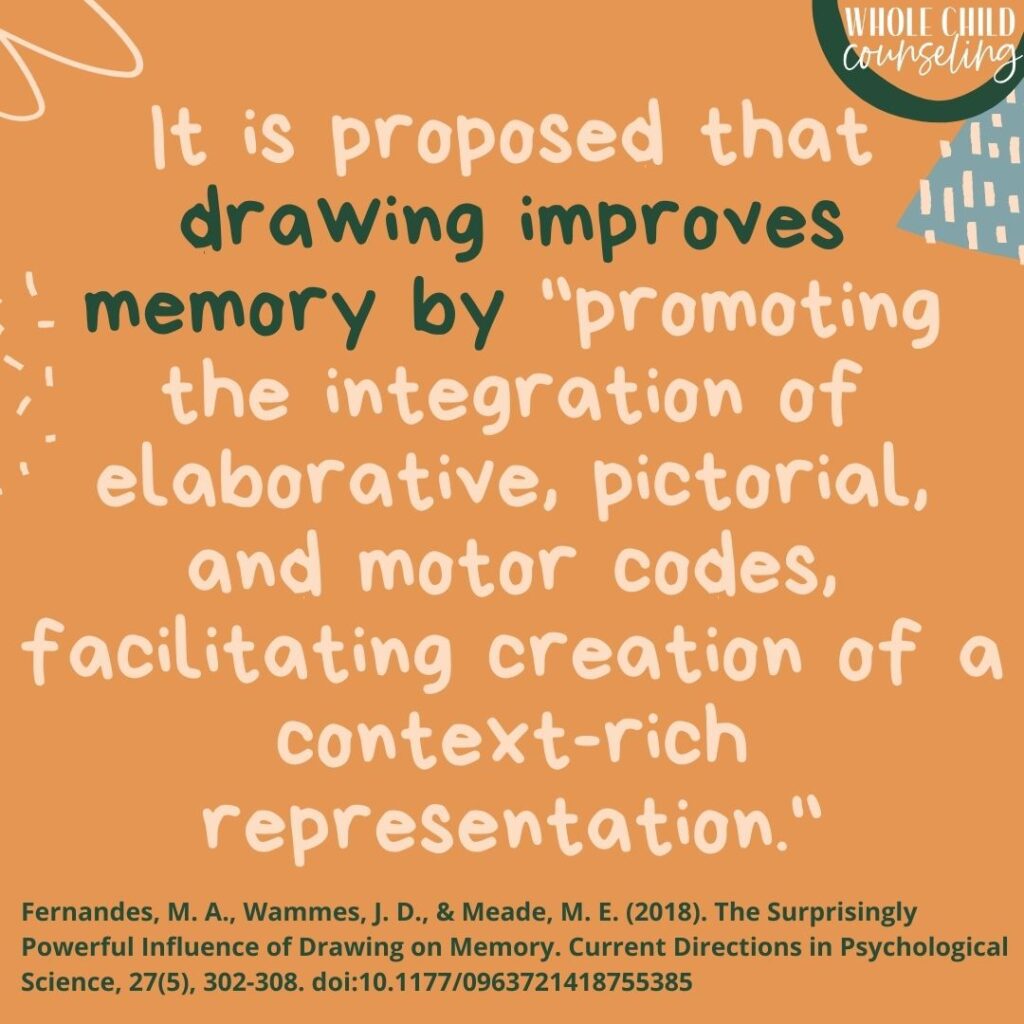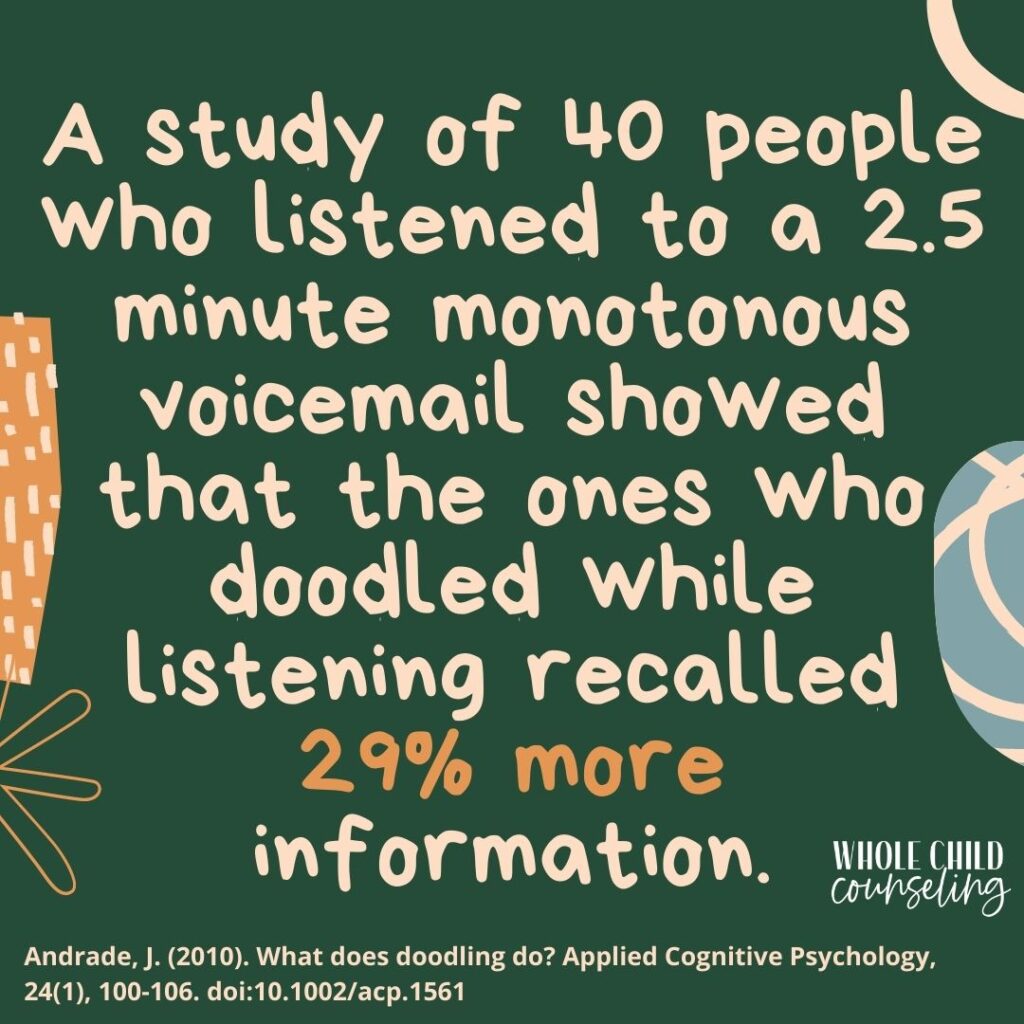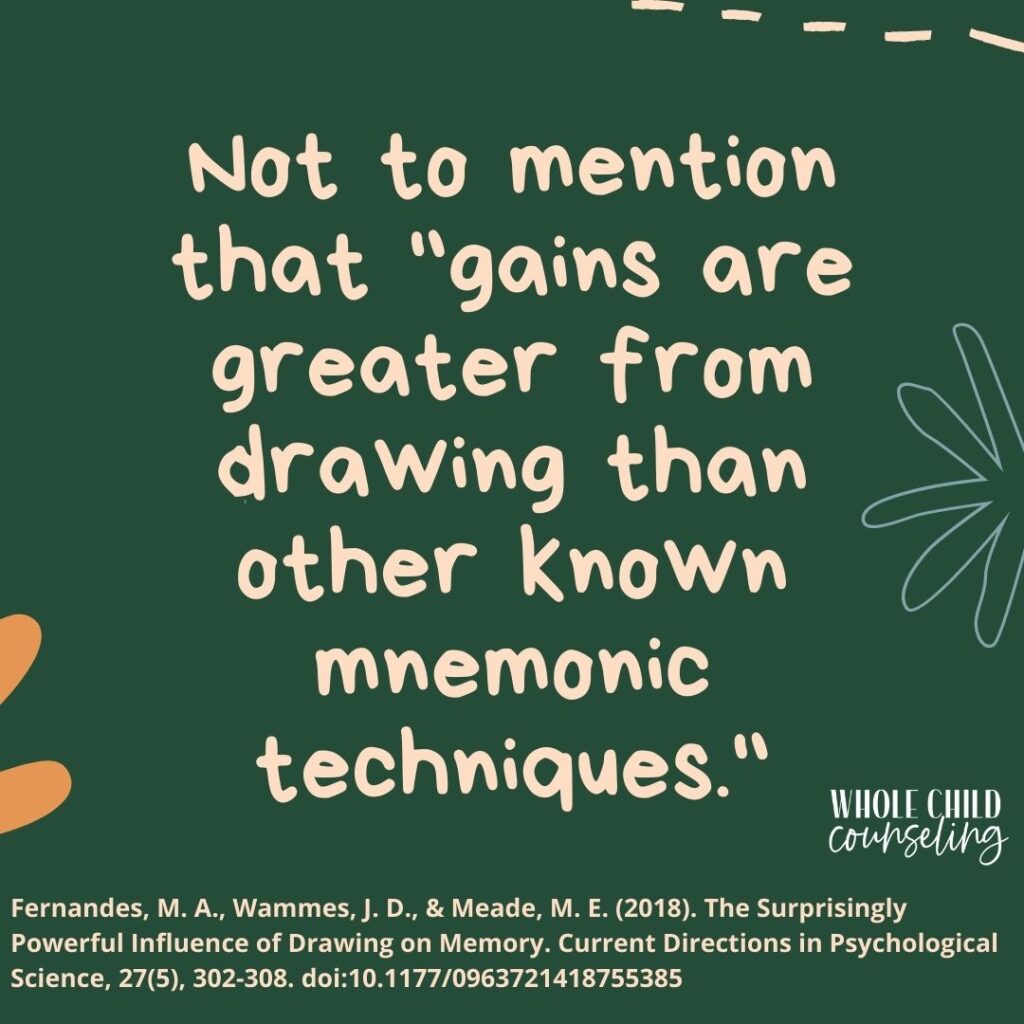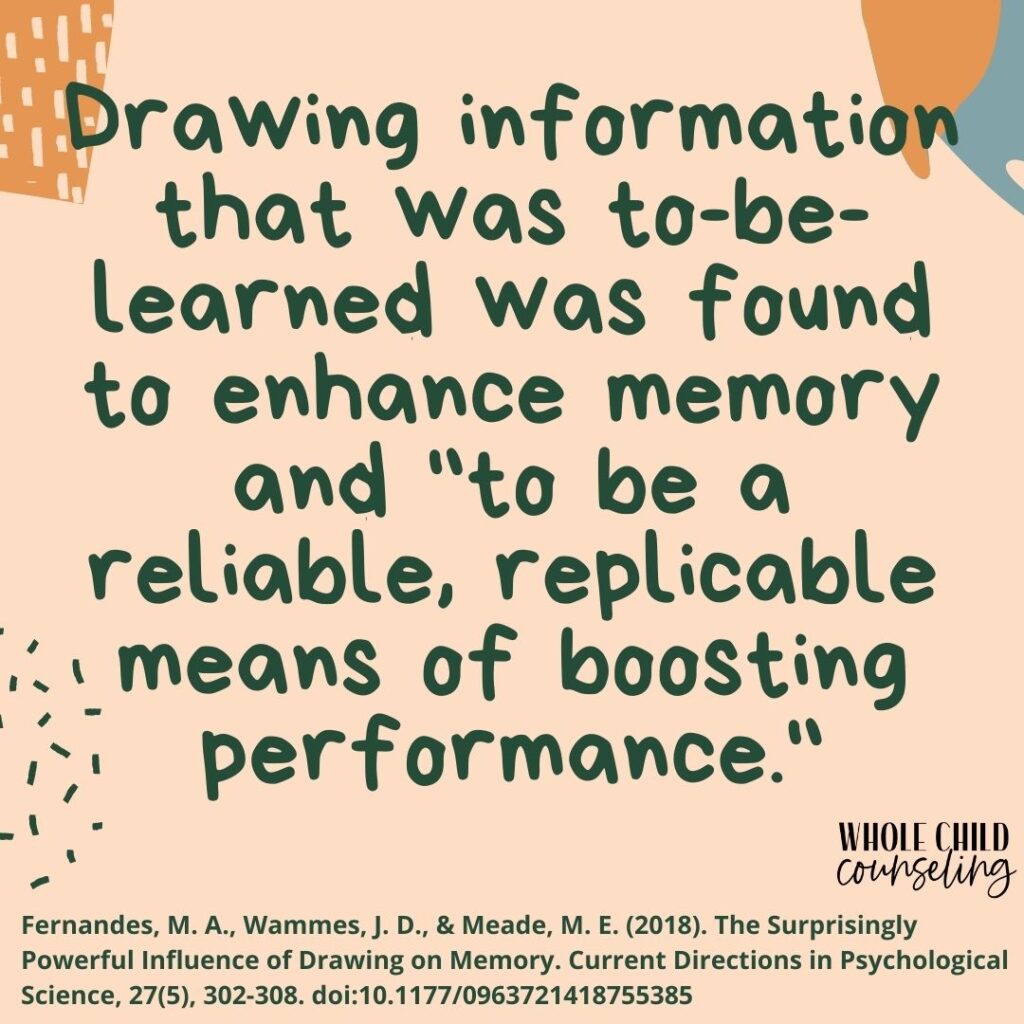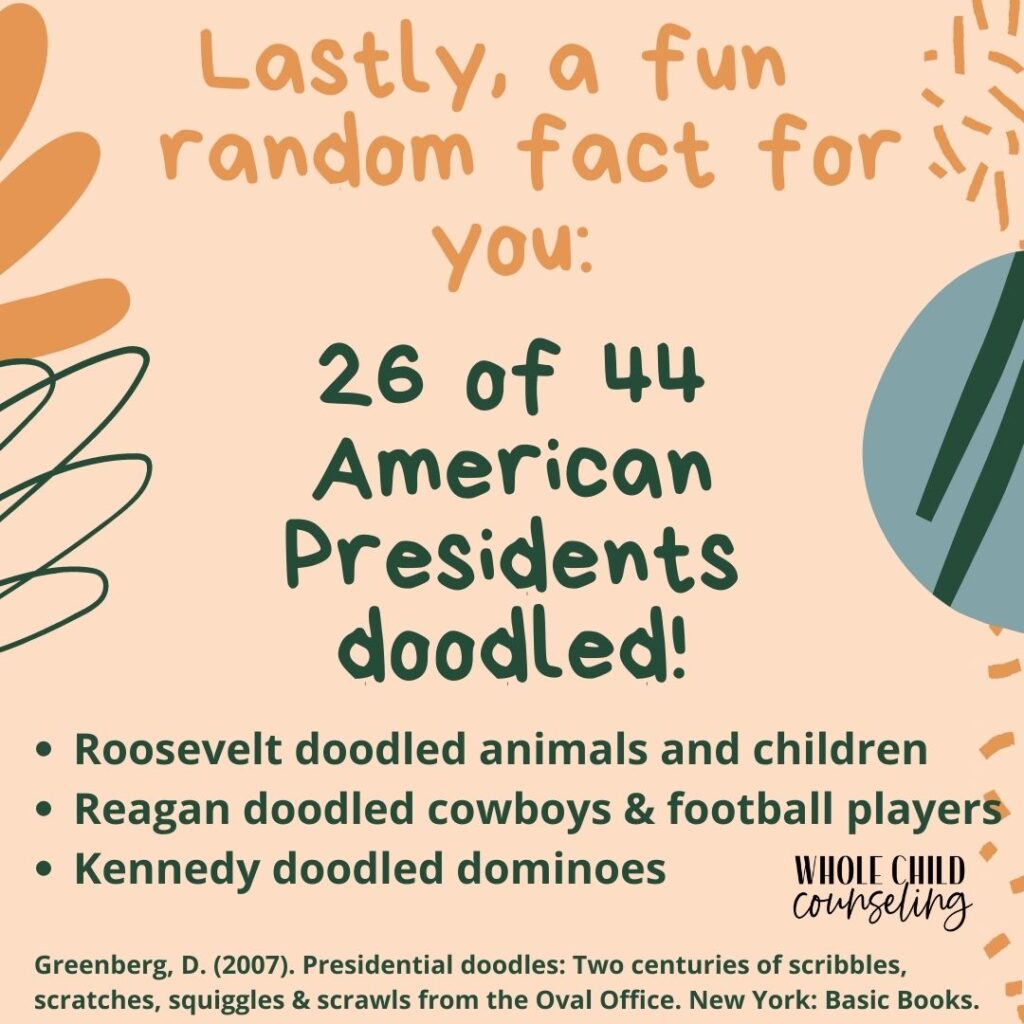Drawing a Beneficial Conclusion
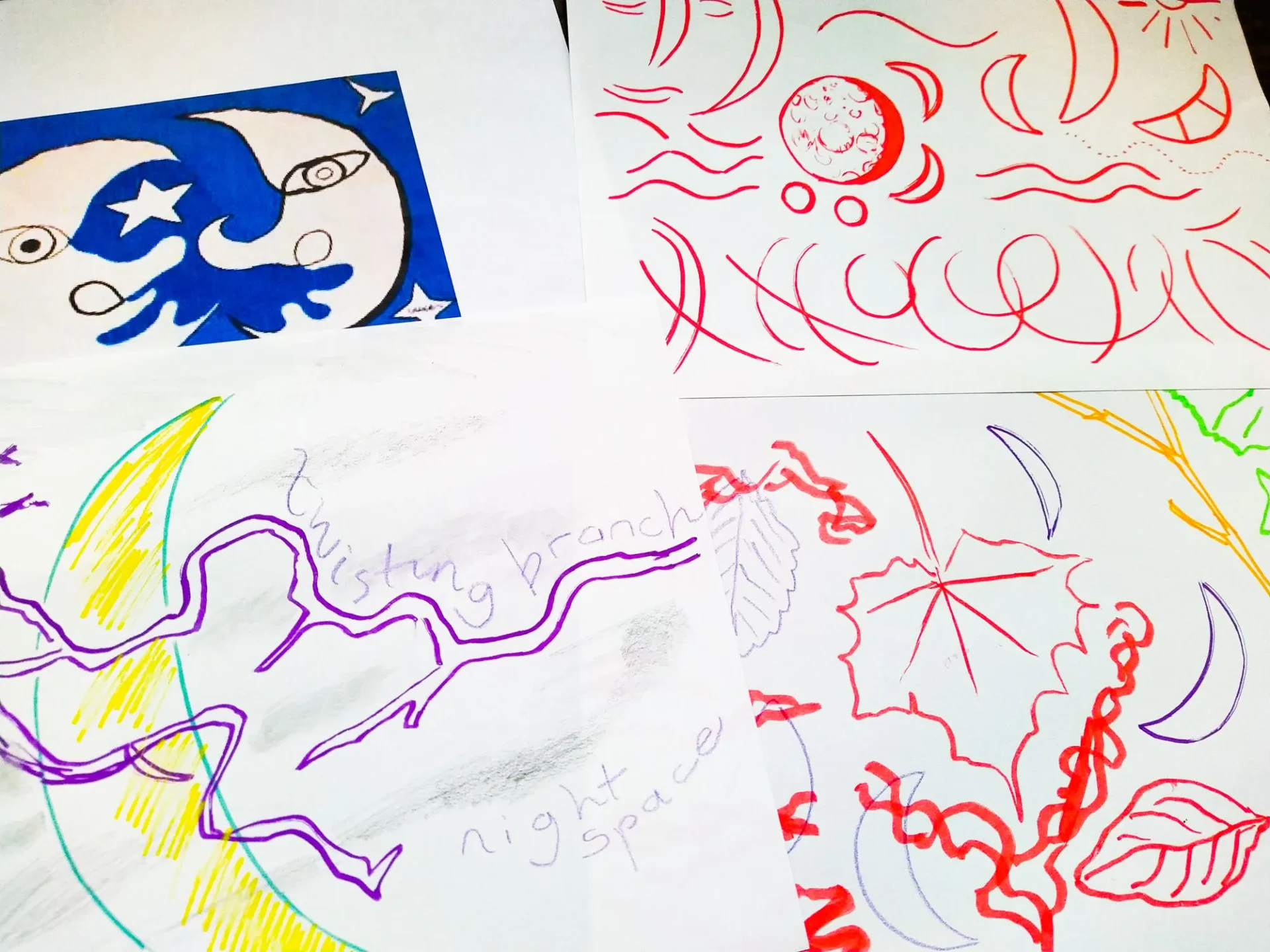
Drawing a Beneficial Conclusion
A recently posted on an activity called “Read, Draw, and Discuss“. After incorporating this activity, I started incorporating whiteboards and drawing more often in my classes at all levels. (I will post more on how I incorporated them later. So, check back!) I originally did it, because my students enjoy it and are more engaged and focused. However, as we used whiteboards and draw/doodle more in class, I found that my students seem to retain vocabulary/structures a bit better.
My interest was piqued and I decided I would look into this more. What I found is quite eye-opening. Doodling/drawing is anything but a distraction. It can actually have many benefits for learning. Here is a synopsis of some of my findings. (Let me say here that I will definitely be incorporating more drawing/doodling in class!)
Drawing/doodling can enhance memory retention. When you engage in visualizing and creating images, it helps encode information in your brain more effectively. Studies have shown that people who doodle or draw while learning are better able to remember the information afterwards. This is because doodling and drawing engage multiple areas of the brain, including the visual cortex, the hippocampus (which is involved in memory formation), and the motor cortex.
A study published in the journal Applied Cognitive Psychology found that people who doodled while listening to a lecture were able to remember 29% more information than those who did not doodle.
It can help to improve focus and concentration, especially during long or difficult learning tasks. This is because doodling helps to keep the brain active and engaged.
A study published in the journal Frontiers in Human Neuroscience found that doodling can help to improve focus and attention, especially during tasks that require sustained attention.
Drawing/doodling can help to boost creativity and problem-solving skills. It can also enhance comprehension of complex concepts. This is because doodling and drawing allow the brain to explore (abstract) ideas and concepts in a more visual and imaginative way.
A study published in the journal Creativity Research Journal found that people who doodled while brainstorming were able to generate more creative ideas than those who did not doodle.
It reduce stress. It can be a relaxing and de-stressing activity. This can be helpful for students who are feeling overwhelmed or anxious about learning.
A study published in the journal Art Therapy found that doodling can help to reduce stress and anxiety levels.
And, don’t forget that doodling and drawing can simply be a fun and enjoyable way to learn and can help make learning more engaging! Plus, you will be amazed by your students’ abilities and what they come up with!
I hope this gives you something to consider when approaching instruction in your classroom! Please share your thoughts and insights in the comments below!
Mach’s gut!
